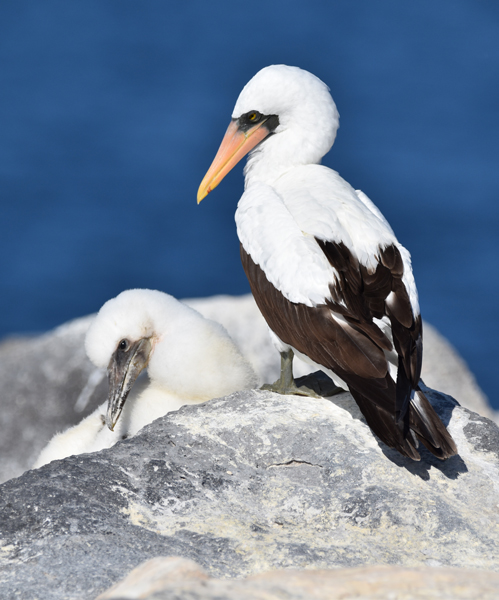by Dr. Lenore Tedesco, Executive Director

Nazca Boobies
We were treated to daily expeditions to spectacular locations. Each morning we would awaken to a new island, a new viewscape, and new experiences. We traveled to shore in small boats called pangas, each with a knowledgeable and dedicated guide. Most landings were “wet” landings on a beach. We set off on foot in small groups to explore landscapes like nowhere else on Earth and among wildlife that have no fear of humans. At every location, we were the only group. The number of people allowed at each stop is carefully controlled by the Galápagos National Park Authority. The entire archipelago is protected with 97% of the land mass designated as a National Park, and it is surrounded by a vast marine sanctuary. Human habitation is restricted to the remaining 3%. Galápagos guides and naturalists are native to the islands and serve as park rangers and stewards of this precious resource. They are independent from the travel companies and therefore able to help ensure that ecotourism works to sustain and protect this treasure without exerting damaging pressure on it.
The historical impact of people on the islands has been significant. Introduced species have caused great harm to the ecosystems, and hunting decimated populations of some animals, notably the giant tortoises from which Galápagos gets its name. We learned of the extraordinary efforts to eradicate feral goats that were released on the islands to provide a source of meat to mariners. These goats decimated native plants, nearly stripping some islands bare and heavily impacting the giant tortoises. On other islands, the introduction of rats and free-roaming cats has had dire consequences to ground-nesting birds and defenseless iguanas and lizards that are heavily preyed upon by these introduced animals. While we were worlds away from home, we were reminded that these conservation challenges are also significant management issues for us. Our beach-nesting birds face similar threats including predation by free-roaming cats and other unnatural predators. The people of the Galápagos chose to preserve and protect their native species and it has made all the difference. The protection of our own native species depends on us making this choice as well, and I hope we will. You can check out our Galápagos photo diary, and we hope to share our adventure in a lecture with you soon.
